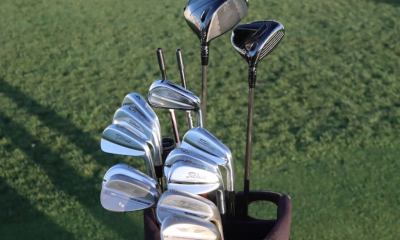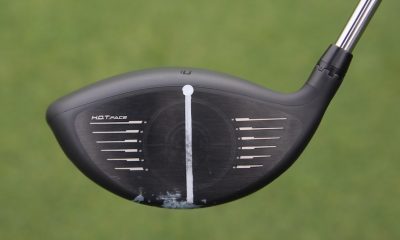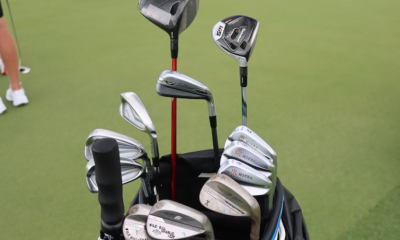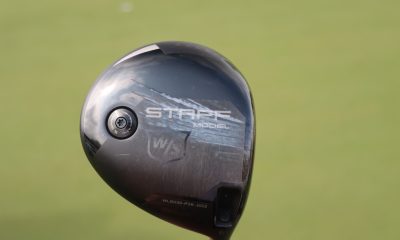Instruction
Faults and Fixes: Open Club Face at the Top
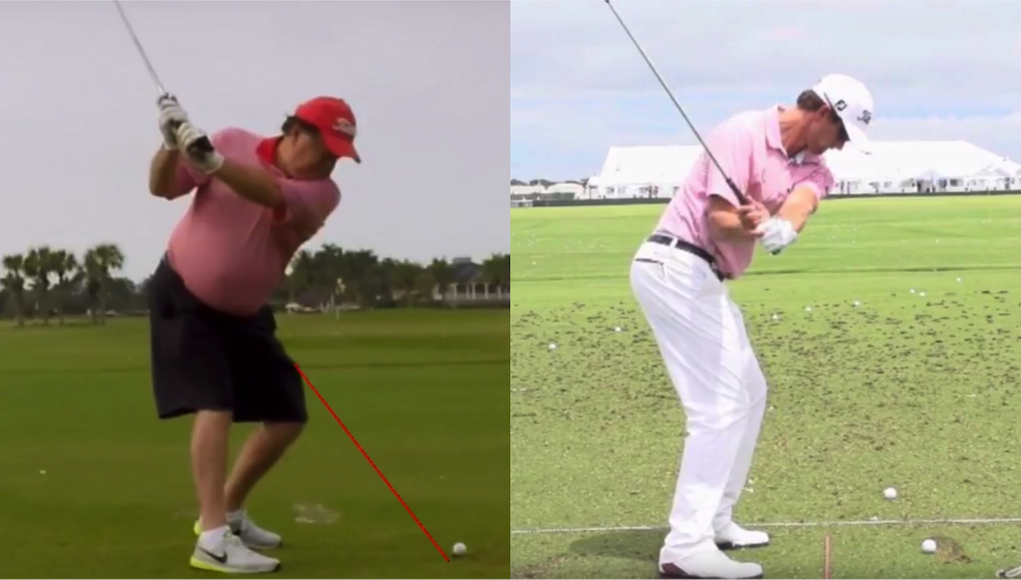
This is the second article in our “Faults and Fixes” series with PGA Master Professional Dennis Clark. In this series, Dennis explains specific swing flaws and the method in which they should be fixed to produce the best long-term results.
Fault: Open Club Face at the Top
One of the most common swing faults I encounter with golfers is one where they tend to get the club face open at the top of the swing or even sooner. And if you look at the video at the top of this article, you’ll see a club face that is considered “open” at the top.
Note: Even a “square” face is actually 90 degrees open to the target at the top of the backswing, but the club face you see here is very open to the path/arc of that swing.
Now it’s true that the cause is the grip this golfer employs, as well as the “cup” or “extension” in his the lead wrist, but those problems should be dealt with later. Why? You’re watching at a golfer who fights a very severe hook. Yes, even with his open club face at the top he can hook the ball off the planet.
But just for a second, let’s pretend we started by correcting the club face at the top of his swing. What would happen? I can tell you, because this golfer was aware of his fault so he asked me to fix it. And when I corrected the club face for him, his shots barely got off the ground and dove hard left. Why? Because this golfer has learned to play what’s called “open-to-shut” golf. What that means is he has become adept at flipping the club closed into impact.
On my FlightScope, this golfer’s path measured +4 degrees (in to out) and his Boditrak center of pressure trace showed 65 percent of his pressure on his trail leg at impact. Basically, he was hanging back and flipping the club closed at impact.
So the two big problems for this golfer are his path and his inability to get through the golf ball. He is used to hooking the ball, so he has ingrained his move reflexively. That’s why I did not want to immediately correct his club face position. To do the correction in that sequence would make the problem worse, not better. Yes, his swing might look better on video, but as we saw his ball flight got worse.
So what to do?
In this case we worked on setting up a little open to the target and we moved the golf ball slightly forward. I also wanted him to feel his body rotate through the ball more. This correction took some hook out of the ball flight and enabled him to “finish” the shot, or follow through. Over time his swing actually started to produce the ball flight it should with an open club face at the top: a weak push/block to the right. Then we squared the face and the correction was complete.
Again, it’s critical to pay attention to impact before changing anything in a golf swing. It’s just like the previous Faults and Fixes article where we met a golfer with a plane that was too steep. It couldn’t be corrected until the student understood that his reaction to the flaw was the problem, not the flaw itself. This week’s student had to learn that his reaction to his open face was causing the swing flaw, not the open face itself. Once that was understood, he was (and still is) on his way!
If you’re interested in having me take a look at a video of your swing as part of my online instruction service, you can contact me at [email protected].
- LIKE52
- LEGIT13
- WOW0
- LOL1
- IDHT1
- FLOP3
- OB2
- SHANK23
Instruction
Clement: Stop ripping off your swing with this drill!

Not the dreaded headcover under the armpit drill! As if your body is defective and can’t function by itself! Have you seen how incredible the human machine is with all the incredible feats of agility all kinds of athletes are accomplishing? You think your body is so defective (the good Lord is laughing his head off at you) that it needs a headcover tucked under the armpit so you can swing like T-Rex?
- LIKE0
- LEGIT1
- WOW2
- LOL0
- IDHT0
- FLOP0
- OB0
- SHANK2
Instruction
How a towel can fix your golf swing

This is a classic drill that has been used for decades. However, the world of marketed training aids has grown so much during that time that this simple practice has been virtually forgotten. Because why teach people how to play golf using everyday items when you can create and sell a product that reinforces the same thing? Nevertheless, I am here to give you helpful advice without running to the nearest Edwin Watts or adding something to your Amazon cart.
For the “scoring clubs,” having a solid connection between the arms and body during the swing, especially through impact, is paramount to creating long-lasting consistency. And keeping that connection throughout the swing helps rotate the shoulders more to generate more power to help you hit it farther. So, how does this drill work, and what will your game benefit from it? Well, let’s get into it.
Setup
You can use this for basic chip shots up to complete swings. I use this with every club in my bag, up to a 9 or 8-iron. It’s natural to create incrementally more separation between the arms and body as you progress up the set. So doing this with a high iron or a wood is not recommended.
While you set up to hit a ball, simply tuck the towel underneath both armpits. The length of the towel will determine how tight it will be across your chest but don’t make it so loose that it gets in the way of your vision. After both sides are tucked, make some focused swings, keeping both arms firmly connected to the body during the backswing and follow through. (Note: It’s normal to lose connection on your lead arm during your finishing pose.) When you’re ready, put a ball in the way of those swings and get to work.

Get a Better Shoulder Turn
Many of us struggle to have proper shoulder rotation in our golf swing, especially during long layoffs. Making a swing that is all arms and no shoulders is a surefire way to have less control with wedges and less distance with full swings. Notice how I can get in a similar-looking position in both 60° wedge photos. However, one is weak and uncontrollable, while the other is strong and connected. One allows me to use my larger muscles to create my swing, and one doesn’t. The follow-through is another critical point where having a good connection, as well as solid shoulder rotation, is a must. This drill is great for those who tend to have a “chicken wing” form in their lead arm, which happens when it becomes separated from the body through impact.
In full swings, getting your shoulders to rotate in your golf swing is a great way to reinforce proper weight distribution. If your swing is all arms, it’s much harder to get your weight to naturally shift to the inside part of your trail foot in the backswing. Sure, you could make the mistake of “sliding” to get weight on your back foot, but that doesn’t fix the issue. You must turn into your trial leg to generate power. Additionally, look at the difference in separation between my hands and my head in the 8-iron examples. The green picture has more separation and has my hands lower. This will help me lessen my angle of attack and make it easier to hit the inside part of the golf ball, rather than the over-the-top move that the other picture produces.


Stay Better Connected in the Backswing
When you don’t keep everything in your upper body working as one, getting to a good spot at the top of your swing is very hard to do. It would take impeccable timing along with great hand-eye coordination to hit quality shots with any sort of regularity if the arms are working separately from the body.
Notice in the red pictures of both my 60-degree wedge and 8-iron how high my hands are and the fact you can clearly see my shoulder through the gap in my arms. That has happened because the right arm, just above my elbow, has become totally disconnected from my body. That separation causes me to lift my hands as well as lose some of the extension in my left arm. This has been corrected in the green pictures by using this drill to reinforce that connection. It will also make you focus on keeping the lead arm close to your body as well. Because the moment either one loses that relationship, the towel falls.


Conclusion
I have been diligent this year in finding a few drills that target some of the issues that plague my golf game; either by simply forgetting fundamental things or by coming to terms with the faults that have bitten me my whole career. I have found that having a few drills to fall back on to reinforce certain feelings helps me find my game a little easier, and the “towel drill” is most definitely one of them.
- LIKE11
- LEGIT1
- WOW2
- LOL0
- IDHT0
- FLOP2
- OB0
- SHANK8
Instruction
Clement: Why your practice swing never sucks
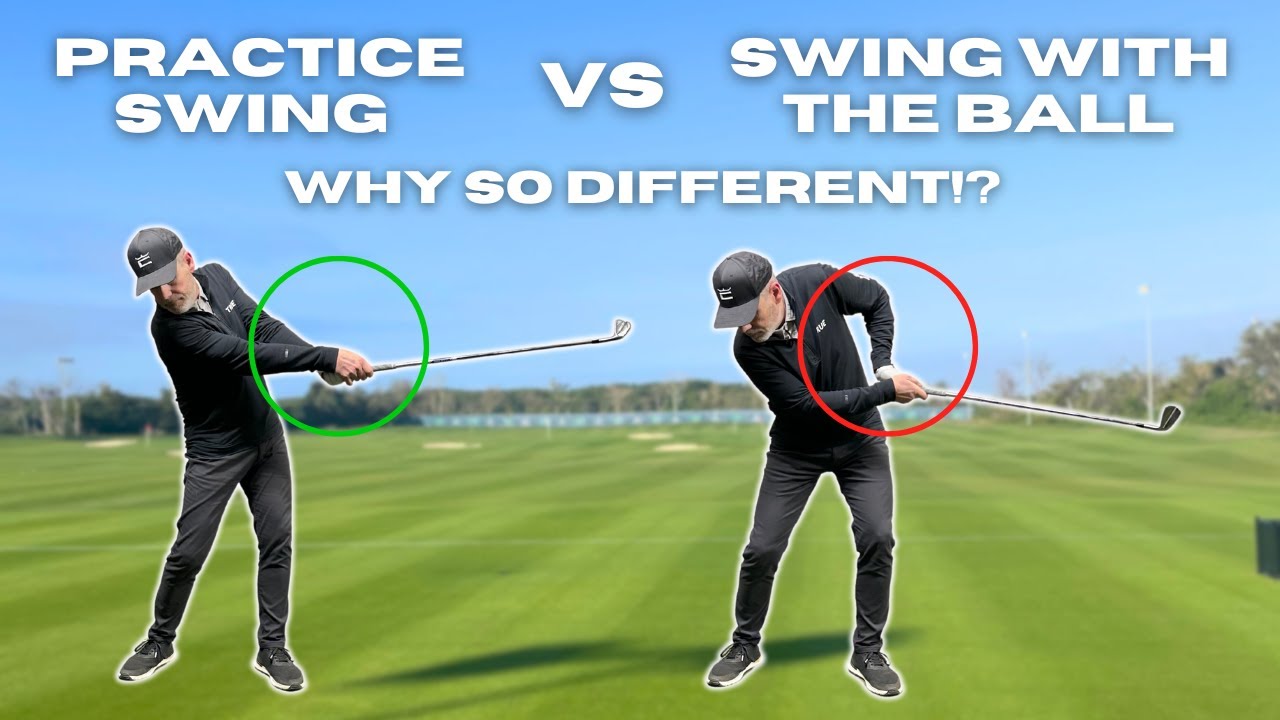
You hear that one all the time; I wish I could put my practice swing on the ball! We explain the huge importance of what to focus on to allow the ball to be perfectly in the way of your practice swing. Enjoy!
- LIKE0
- LEGIT0
- WOW0
- LOL0
- IDHT0
- FLOP0
- OB0
- SHANK2
-

 19th Hole3 days ago
19th Hole3 days agoJohn Daly stuns fans into silence with brutal opening tee shot on PGA Tour Champions
-

 19th Hole1 week ago
19th Hole1 week ago2-time major champ announces shock retirement from the sport at age of 33
-

 19th Hole1 week ago
19th Hole1 week agoEdoardo Molinari reveals the latest PGA Tour golfer to turn down ‘good offer’ from LIV Golf
-

 19th Hole1 week ago
19th Hole1 week agoScottie Scheffler had an interesting response when asked how he ‘quiets the noise’ following Players victory
-

 Equipment2 weeks ago
Equipment2 weeks agoBest driver 2024: The best driver for you, as recommend by expert club fitters
-

 19th Hole1 week ago
19th Hole1 week agoJon Rahm dealt fresh blow to hopes of qualifying for 2025 Ryder Cup
-

 19th Hole3 days ago
19th Hole3 days agoCharlie Woods finds it tough going on American Junior Golf Association debut
-
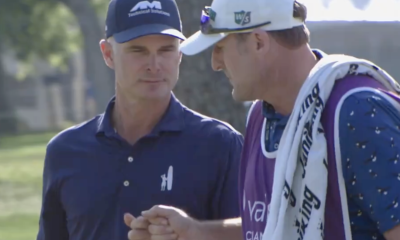
 19th Hole6 days ago
19th Hole6 days agoWhy Kevin Streelman sought USGA approval to use this equipment tool as he leads Valspar after round one













